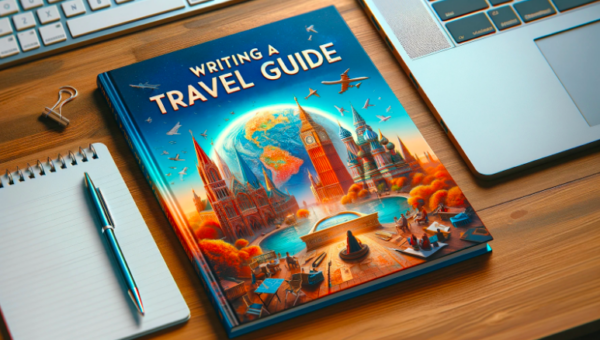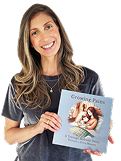Every great story has a structure. It’s the invisible framework that holds everything together — much like the skeleton of a human body. You might not always see it, but without it, well… things tend to fall apart rather quickly. Whether you’re crafting a gripping novel or a brief short story, understanding your story’s structure is your secret weapon.
In this post, we’re going to break down the structure of a story and how mastering it can help you create narratives that don’t just entertain, but captivate. From the classic three-act structure to the 7-point story structure, we’ll explore the tools you need to map out your tale. And don’t worry — we won’t leave you hanging like a poorly executed cliffhanger. You’ll get practical tips to apply right away, with enough examples to keep you in the writing game.
So, grab your pen (or keyboard) and let’s get ready to structure the perfect story — without feeling like you’re stuck in a never-ending plot hole.
What is Story Structure?
At its core, it is the blueprint of your narrative — the plan that guides you from start to finish, ensuring everything fits together seamlessly. Think of it like the framework of a house. You wouldn’t just start building the walls and hope for the best, right? You’d need a plan to know where each room goes, how the plumbing works, and where to place those all-important windows for natural light.The structure of your story works the same way.
Story structure is about organizing events in a way that makes sense to your audience, builds tension, and leads to a satisfying resolution. Whether you’re writing a novel, a short story, or even a screenplay, having a clear structure ensures your story has momentum and doesn’t get lost in a maze of unnecessary details.
Now, here’s the good news: it isn’t a one-size-fits-all thing. You can experiment, bend the rules, or even break them — but understanding the fundamentals is key. So let’s break down why story structure is so important and explore how it can turn your good story into a great one. And don’t worry, no need to memorize a bunch of complicated formulas — we’ll keep it simple and, dare we say, fun.
The Basics of Story Structure
Before you dive into the deep end of experimental plot twists and unreliable narrators, it’s important to understand the basic building blocks of any story. Think of these as the foundational elements that keep your story from falling apart like an IKEA bookshelf without the right screws.
The traditional structure is typically divided into three key parts: the beginning, the middle, and the end. It’s a simple formula, but it’s a reliable one that has stood the test of time.
- The Beginning (Exposition): This is where you introduce the world of your story. Here, you’ll introduce your main characters, establish the setting, and set the stage for the conflict. In a novel, it’s that first chapter where you carefully lay out the “normal” world — the calm before the storm.
In short stories, the beginning may be shorter but should still provide the essentials: who’s involved, where they are, and what they want (or at least what they think they want).
- The Middle (Rising Action, Climax, Falling Action): This is where things get interesting (and a little bit messy). The middle is where the bulk of your story happens, and it’s often where writers tend to lose their way. Here, you’ll introduce obstacles, complications, and unexpected twists that prevent your characters from reaching their goals. The rising action leads to the climax — the moment of highest tension — followed by the falling action, where things begin to wind down.
If the middle is the heart of your story, then the climax is the blood-pumping, edge-of-your-seat moment that readers have been waiting for. Everything before the climax builds toward this intense turning point, and everything after it moves toward resolution. - The End (Resolution/Denouement): Ah, the sweet relief of tying up loose ends. The resolution is where everything gets wrapped up, and you bring the story to a satisfying close. It’s where you address any lingering questions, reveal the consequences of the climax, and show the character’s growth (or lack thereof). The denouement is a fancy French term for “untying the knot,” and it’s where everything gets neatly resolved. Think of it as the calm after the storm.
Now, while the three-part structure is the classic and most widely used format, it’s not the only game in town. In fact, many writers experiment with variations — after all, the best stories often come from bending the rules. But understanding the basic structure gives you the foundation to work from.
Short Story Structure: Key Elements
Writing a short story is a little like trying to bake a cake in a toaster oven: you’ve got less space to work with, but that doesn’t mean it can’t still be delicious. The key to a successful short story lies in how you structure it. With limited room for character development, world-building, and plot twists, every element needs to pull its weight.
Short story structure is streamlined and efficient, typically consisting of the following key elements:
The Hook (Opening)
You don’t have the luxury of a slow buildup in a short story. You need to grab the reader’s attention immediately. The opening is crucial because it sets the tone, introduces the conflict, and piques curiosity in just a few sentences. Whether it’s an intriguing question, a shocking moment, or an evocative description, your hook should draw readers in right away.
Conflict and Rising Action
In short stories, you don’t have time for an elaborate set-up. The conflict needs to surface quickly and build toward the climax. This is where the story starts to gain momentum. Think of it as the “meat” of your story, where you develop the central problem or challenge your characters face. The rising action is the series of events that make this conflict more complicated and drive the narrative forward.
Climax
As with longer forms of storytelling, the climax in a short story is the moment of greatest tension. It’s where the conflict reaches its peak, and the stakes are at their highest. In just a few paragraphs or pages, you want to give the reader a rush of adrenaline — the pivotal moment that will ultimately determine the story’s outcome.
Resolution (Falling Action and Denouement)
The resolution in a short story is concise but satisfying. After the climax, you’ll begin to tie up the loose ends quickly. The falling action addresses the aftermath of the climax and leads into the denouement, where the conflict is resolved, and the story winds down. Short stories often avoid lingering after the resolution, leaving the reader with a sense of closure or sometimes a lingering question.
Economy of Detail
One of the hallmarks of short story structure is the economy of detail. Every word must count. Because you’re working with limited space, you don’t have the luxury of describing every nuance of character or setting. Instead, focus on the essentials — the core elements that move the story forward. Each detail should have a purpose, whether it’s developing character, advancing the plot, or contributing to the theme.
Short stories may be short on length, but they can be rich in impact. By mastering the key elements of short story structure, you can create a narrative that resonates with readers, even if it’s only a few pages long. The trick is to make every moment, every word, and every twist count.
Looking to read more about the structure of short stories? Read our blog post on How to Structure a Short Story.
The 7-Point Story Structure
If you’re looking for a little more structure (pun intended) in your storytelling, the 7-point story structure is an excellent blueprint to keep things moving forward without veering off course. Whether you’re plotting a novel, screenplay, or short story, this structure provides a clear, simple way to organize your plot and ensure it flows smoothly from start to finish.
The 7-point structure works by identifying key turning points throughout your story, allowing for a satisfying rise in tension, followed by a resolution that feels earned. Here’s a breakdown of each point and why it matters:
- The Hook: This is where the story begins. It’s the moment that catches the reader’s attention, pulls them into the world of your narrative, and sets the tone for what’s to come. Think of this as your opening pitch — it needs to be compelling and intriguing to make readers want to know more.
- Set-Up: The set-up introduces the main character, the world they inhabit, and their primary goal. In this section, you lay out the groundwork for the conflict and hint at what’s at stake. It’s all about providing context so the reader understands who your protagonist is and what they’re up against. Here, you’re building anticipation for what’s about to unfold.
- First Turning Point: The first turning point is the moment when the story takes a significant shift — something that pushes the plot forward and changes the direction of the narrative. This often introduces the story’s central conflict or obstacle, creating a sense of urgency or tension. It sets the stage for everything that happens next.
- The Midpoint: The midpoint is a game-changer. It’s a critical moment in the story where everything changes — often a revelation, major twist, or shift in character motivation. This is where the stakes get raised, and the protagonist’s journey takes on new significance. It’s also where the story transitions from “rising action” to “climax.”
- Second Turning Point: Just when you think you know where the story is going, the second turning point turns everything on its head. This is another significant event that pushes the story into its final act. It’s often the lowest point for your protagonist — the moment where things seem the darkest before the resolution begins to take shape. The second turning point is where everything builds toward the climax.
- Climax: The climax is the high-stakes showdown — the pivotal moment when everything culminates. It’s where the protagonist faces their biggest challenge, often resulting in a dramatic decision or action. The conflict comes to a head, and the outcome of the story is determined. This is the scene where you want the reader’s heart racing, holding their breath until the outcome is revealed.
- Resolution: After the climax, the resolution provides closure to the story. This is where you tie up loose ends, resolve the conflict, and show the character’s transformation. It’s important to provide a sense of finality — readers should walk away with the satisfaction that the story has come full circle.
The 7-point structure is a great way to map out your story’s major beats, but it’s flexible enough to let you play with pacing and tension. You can tweak it to fit your narrative style and tone, but these seven points will keep your plot from feeling aimless. With this structure, you can create stories that are both well-organized and emotionally compelling.
The Structure of a Story: More Advanced Techniques
Now that you’ve got the basics and some classic structures under your belt, it’s time to kick things up a notch. If you’re looking to add depth and complexity to your storytelling, or if you’re just tired of following the same old plot lines, advanced structures will give you the tools to craft something truly unique.
While the traditional three-act structure and the 7-point story structure are incredibly useful, they’re not the only ways to structure a narrative. Here are a few advanced techniques to help you break the mold and create something truly engaging:
Nonlinear Storytelling
Nonlinear storytelling is like taking the scenic route on a road trip — it might take a little longer, but the payoff is often worth it. In a nonlinear structure, the narrative doesn’t follow a straight path. Events are presented out of chronological order, often jumping back and forth between different timelines.
Think of movies like Memento or books like The Night Circus — stories that weave multiple time periods or perspectives together to create a more layered, complex narrative. This approach allows for surprise and mystery, making the reader work a little harder to piece everything together. While nonlinear storytelling can be challenging, it’s perfect for narratives where the journey itself — the puzzle — is just as important as the destination.
Multiple Perspectives
Stories told from multiple points of view can offer a deeper exploration of characters and events. Instead of following one main protagonist, you might choose to tell your story from the perspectives of several key characters. This technique gives you a broader scope and allows for contrasting viewpoints, enriching the story’s emotional depth.
You’ll often see this in epic novels or multi-character narratives, where each character’s journey intersects in unexpected ways. A well-executed multiple-perspective structure can build tension and drama, creating a richer, more immersive experience for the reader. Just be sure not to confuse your audience by overloading them with too many voices — balance is key.
Circular Storytelling
Circular storytelling starts and ends in the same place. It might seem simple, but the emotional resonance of this technique can be profound. In this structure, the story might repeat certain elements, motifs, or even events, with a subtle change or twist that highlights the character’s growth or transformation.
This type of structure works especially well for stories about personal journeys or cycles of change. A character might return to where they began, but they’ve grown or learned something that gives the ending a new meaning. It’s like watching a character “come full circle” in a way that feels earned and satisfying.
Parallel Storylines
Parallel storytelling involves two (or more) narratives that run side by side, often with thematic or emotional connections between them. These storylines might initially seem unrelated, but as they develop, they start to converge — or contrast — in meaningful ways.
This structure is often used in stories that explore themes of duality or opposition. For example, you might have two characters living seemingly separate lives that eventually intersect, or two time periods that mirror each other in significant ways. Parallel narratives are great for adding complexity and depth to a story, and they often provide dramatic tension as the two plots unfold.
In Media Res (Starting in the Middle)
In media res is a storytelling technique where the story begins in the middle of the action. Instead of starting with a slow build-up or extensive exposition, the narrative drops the reader straight into a pivotal moment, usually at the height of tension or conflict.
This technique can be very effective for stories that are action-driven or need an immediate hook to grab the reader’s attention. It’s a great way to start strong and immerse the reader right away. However, you’ll need to provide some context and backstory as the narrative unfolds, or risk leaving the reader feeling lost.
The Hero’s Journey
This structure, popularized by Joseph Campbell, is the archetypal path many stories follow. It involves a hero who embarks on an adventure, faces a crisis, wins a victory, and returns transformed. This structure is deeply embedded in many myths, legends, and modern stories, from Star Wars to The Lion King.
The Hero’s Journey is a more specific and in-depth structure that can be broken down into several stages, such as “The Call to Adventure,” “The Road of Trials,” and “The Return.” It’s a powerful way to tell a story of personal transformation and universal themes. Writers can either stick closely to the pattern or adapt it to fit a more unconventional narrative.
With these advanced structures, you can push the boundaries of traditional storytelling and explore new ways to engage your readers. Whether you’re experimenting with nonlinear timelines, multiple characters, or parallel storylines, these techniques will allow you to create stories that feel fresh, innovative, and emotionally impactful.
Tips for Crafting Compelling Stories Using Structure
Now that you understand the importance of story structure, let’s look at some practical tips for using it to create stories that not only follow a solid framework but also captivate your readers.
- Start with a Strong Hook. Whether it’s the opening sentence or paragraph, grab your reader’s attention right from the start. Make them want to read more by presenting an intriguing question, a unique character, or a situation that sparks curiosity.
- Keep Your Pacing in Mind. Pacing your story is key to maintaining momentum. Don’t let your story drag in the middle — keep the tension building toward the climax. If things slow down, introduce a new challenge or a twist to keep your reader engaged.
- Use Turning Points to Amplify Conflict. Turning points and conflicts in the plot (like the first turning point or the midpoint) are where things take a sharp turn. Use these moments to raise the stakes and push your characters out of their comfort zones. These shifts keep the story fresh and exciting.
- Ensure a Satisfying Resolution. A great story needs a resolution that answers the central conflict and provides closure for your characters. Whether it’s happy or bittersweet, make sure the ending feels earned and ties up the narrative in a way that resonates emotionally.
- Balance Structure with Creativity. While structure is important, don’t be afraid to bend or break it when necessary. Use it as a guide, not a rulebook. Creative risks, like nonlinear timelines or unreliable narrators, can add layers to your story if executed well.
- Make Every Scene Count. Every scene should move the story forward. If it doesn’t serve a purpose — whether it’s character development, plot progression, or theme building — consider cutting it. A lean, focused narrative is always stronger than one weighed down with excess.
Don’t be afraid to experiment with your structure — but always keep in mind that it’s there to serve your story, not restrict it.
Structure = Story Success
Story structure is the backbone of compelling narratives. By mastering its basics and experimenting with advanced techniques, you’ll create stronger, more engaging stories that captivate readers from start to finish. Here are three key takeaways:
- Structure Keeps You Focused – It provides a clear roadmap, helping you avoid plot holes and unnecessary tangents.
- It Builds Tension – Effective pacing and key turning points keep the reader hooked.
- It Enhances Character Growth – A strong structure ensures your characters evolve naturally through the narrative.
Embrace story structure as a tool to guide your creativity, and you’ll elevate your writing to new heights.
Your Publishing Journey Awaits – Start NowFAQs – Story Structure
Q: What is the structure of a short story?
The structure of a short story typically includes five main parts: the introduction (setting and characters), the rising action (where the conflict begins), the climax (the turning point), the falling action (the lead-up to resolution), and the conclusion (where the conflict is resolved). This format helps create a complete narrative arc, even in a brief story.
Q2: How to layout a short story?
When laying out a short story, start by clearly defining your beginning, middle, and end. Introduce the main characters, establish the setting, and quickly establish the conflict. Build tension through the rising action, climax, and wrap things up with a resolution that ties up loose ends.
Q3: What is the 7 point story structure?
The 7-point story structure consists of seven key plot points: the hook, the set-up, the first turning point, the midpoint, the second turning point, the climax, and the resolution. These points help ensure that the narrative maintains momentum and emotional impact, leading to a satisfying conclusion.
Q4: What are the 5 basic elements of a short story?
The five basic elements of a short story are characters, setting, plot, conflict, and themes of a story. These elements work together to build a cohesive narrative that engages the reader, with the plot developing around the central conflict and driving the characters toward resolution.
Q5: How long should a short story be?
A short story typically ranges from 1,000 to 7,500 words, though it can vary depending on the publication or contest guidelines. The key is to keep the story focused, with enough detail to develop the plot, characters, and themes without unnecessary filler.
Q6: How many paragraphs is a short story?
The number of paragraphs in a short story can vary, but most stories will have between 20 to 40 paragraphs, depending on their length. Each paragraph should serve to move the plot forward or develop the characters, ensuring that the story stays concise and engaging.
Q7: How to plot a story?To plot a story, begin by defining the central conflict or problem your character will face. Next, plan the progression of events, including the rising action, climax, and resolution. Ensure that each scene contributes to the conflict or character development, leading to a meaningful conclusion.







